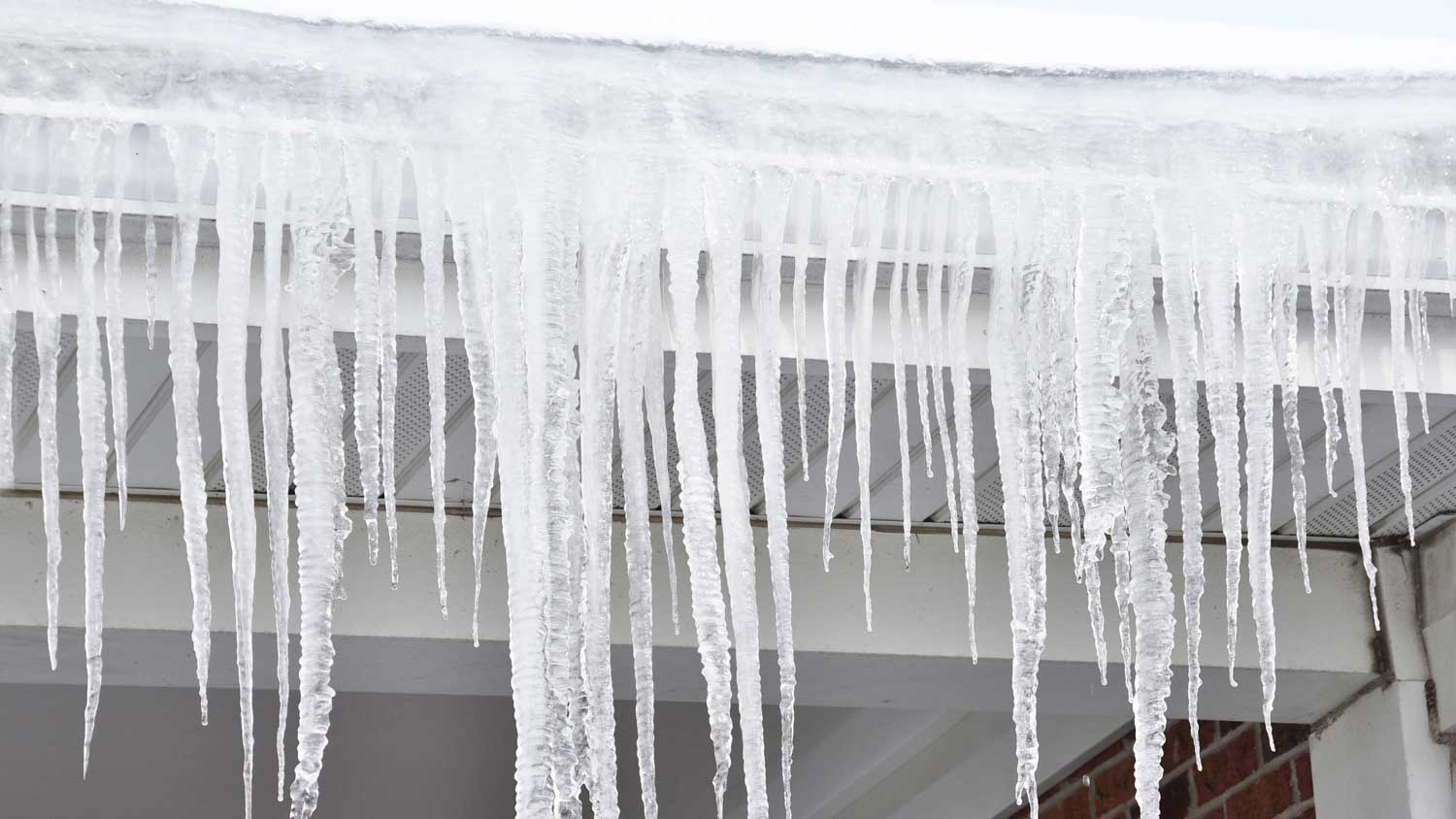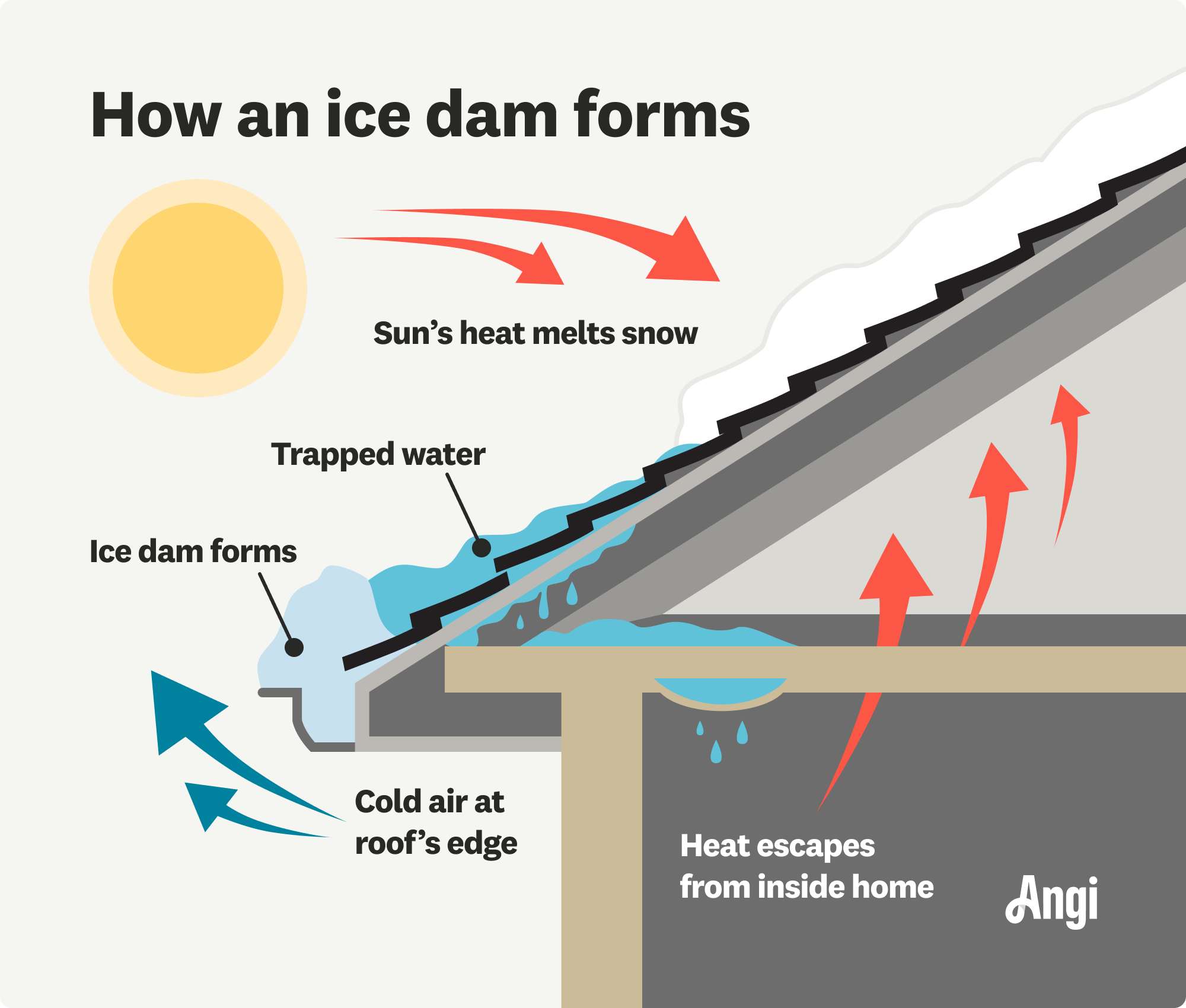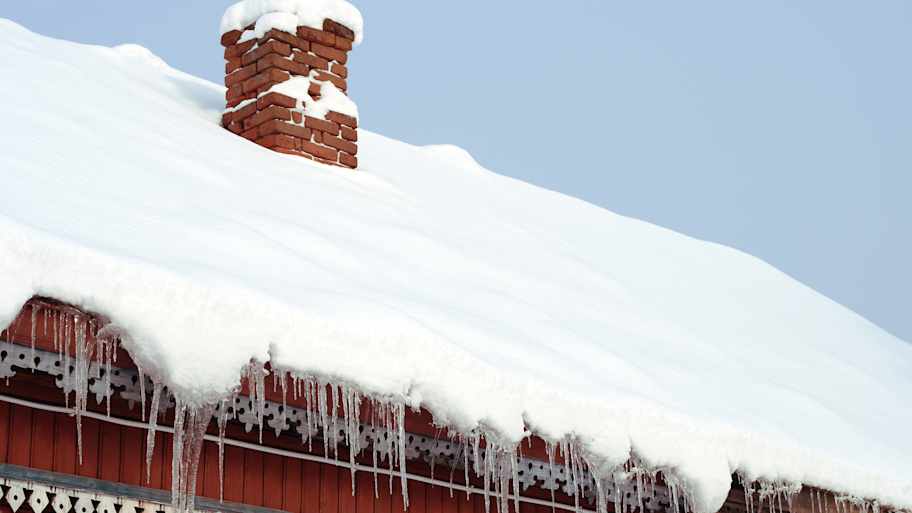
Discover the average roof heating cable installation cost, key price factors, and how to budget for your project. Learn how to save and what to expect.
Many homeowners have been snowed by this enduring myth


Ice dams can form on any roof, with or without gutters.
Melting snow refreezing on the roof’s edge causes ice dams to form.
Keeping the roof edge and gutters clear can prevent ice dams.
If you’ve had ice dams form on your roof, it may be tempting to blame your gutter system and want to get rid of the gutters entirely. But before you do away with your roof’s best protection against drainage problems, it’s important to know that ice dams can form whether or not your home has gutters. Learn more about ice dams, gutters, and the best way to keep your home protected against these damaging ice formations.
Ice dams are chunks of ice that form along the edge of a roof when snow on the roof’s surface begins to melt and then refreezes. They can happen on roofs of any common roof pitch, from steep to nearly flat, and can cause serious damage to your roof, gutter system, and home’s interior.
Many people confuse ice dams and icicles, and while these two winter hazards have a lot in common, they’re actually very different. Icicles form off the roof’s edge or the gutters and hang down into the open air. Ice dams form on the roof itself and are larger, denser chunks of ice when compared to thin, conical icicles.

It’s a common myth that gutters cause ice dams, but that’s not the case. Ice dams can form on houses with or without gutters. All roofs have an edge, whether or not gutters are attached, and that edge is where ice dams form. Properly installed and maintained gutters can actually help prevent ice dams in some cases by allowing melting snow to drain away from the roof’s edge before a dam forms.

What causes ice dams? A combination of warm air, cold roof edges, and melting snow. Accumulated snow on a roof can begin to melt from warm temperatures from inside the house or from the heat of the daytime sun. As the snow melts, the water travels down the roof, headed for the roof edge. Because the edge overhangs the home and isn’t warmed by interior heat, it’s much colder than the part of the roof the snow is melting off of. As the melted snow hits the colder roof edge, it refreezes, creating a large chunk of ice.
Once that chunk of ice has formed, it takes a long time to melt. In the meantime, more melted snow is traveling down the roof, only to be blocked from draining by the ice dam. With nowhere to go, that water makes its way between and underneath the shingles, entering the interior of your home and causing damage.
While gutters that are clogged with ice or debris can help contribute to ice dam formation, ice dams can form just as easily on roofs with no gutters. The cold temperature of the roof edge is what causes the melting snow to refreeze, and that will happen whether gutters are attached or not.
Whether or not your home has a gutter system, you need to know how to prevent ice dams in order to avoid the damage they can cause.
Keeping heat inside your home instead of allowing it to escape through the roof is one of the best ways to prevent ice dams. Properly insulating your attic will keep the roof above it from getting warmer than the roof edge and will help prevent snow from melting too quickly. Keeping your roof at a consistent temperature will ensure snow melts evenly and can drain properly.
Your attic should be similar temperature to outside, which eliminates the melting on the roof which then will eliminate the ice problems. Keeping your attic cold through insulation on the attic floor and properly functioning ventilation is the solution.
After a heavy snowfall, clearing your roof with a brush or roof rake can help clear a path for melting snow to drain. Keep in mind that this can be a dangerous job, so use a long-handled brush or roof rake and only clear what you can reach from the ground. Climbing up an icy ladder onto a snowy roof is a recipe for a bad fall.
Installing heat cables in your gutters can keep ice from forming and help drainage flow smoothly, although they won’t necessarily prevent ice dams from forming. When properly installed using products with the appropriate safety ratings, roof heat cables are not dangerous and can prevent ice dam-related damage. The cost of having heat cables installed by a professional can be a small investment in the peace of mind of knowing your home is protected safely.
If it’s too late for prevention and ice dams have already formed, hire a pro to clear ice dams. A local roof cleaner can remove ice dams before they cause serious damage. Ice dam removal costs between $400 and $1,400, depending on the size of the ice dam and the height of your roof.
From average costs to expert advice, get all the answers you need to get your job done.

Discover the average roof heating cable installation cost, key price factors, and how to budget for your project. Learn how to save and what to expect.

Ice dams and icicles are common winter problems. Learn the difference between these two ice-related hazards and how to prevent them.

Wondering why icicles form on your roof? Learn the underlying problems, why you need to take action, and the solutions you can implement to fix the issue.

It’s snowing up a storm outside when you start to wonder: How much snow can my roof hold? Use our snow load calculator to determine your roof’s limits.

Wondering how to prevent icicles on roofs? While you can't keep it from snowing, you can take steps to keep the icicles at bay. Find out how.

Ice dams can cause serious damage to your roof and home. Learn what causes ice dams and steps you can take to prevent them.